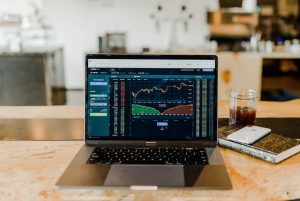Hedging Forex in Times of Volatility: Tips for Navigating the Market
Forex trading is a popular option for investors looking for high returns, but it’s also a risky business. The forex market is constantly fluctuating and can be volatile, making it difficult to predict future movements. However, there are ways to minimize risk and protect your investments through hedging.
What is Hedging?
Hedging is a strategy used to protect an investment from potential losses. It involves taking a position in the market that offsets your existing position, reducing your overall risk. Hedging can be done in several ways, including options, futures contracts, and currency swaps.
Hedging in Forex
Hedging in forex involves taking a position in a currency pair to offset the risk of an existing position. For example, if you are long on the USD/JPY pair, you could also take a short position in the same pair to hedge your position. If the market moves against your long position, your short position will gain, offsetting your losses.
Hedging can be done in several ways, including using options, futures contracts, or currency swaps. Options allow you to buy or sell a currency pair at a fixed price at a future date, while futures contracts are agreements to buy or sell a currency pair at a future date at a fixed price. Currency swaps involve exchanging one currency for another at a fixed rate for a specific period.
Tips for Hedging Forex in Times of Volatility
1. Use Options
Options are a popular hedging tool in forex because they offer a high degree of flexibility. They allow you to buy or sell a currency pair at a fixed price at a future date, giving you the option to exercise the contract if the market moves against you. Options can be used to hedge both long and short positions, making them a versatile tool for managing risk.
2. Diversify Your Portfolio
Diversification is an important strategy for managing risk in forex. By diversifying your portfolio, you reduce the risk of losses from a single currency pair. This can be done by investing in multiple currency pairs, or by investing in other asset classes such as stocks or commodities.
3. Monitor Economic News
Economic news can have a significant impact on the forex market. By monitoring economic news, you can anticipate potential market movements and adjust your hedging strategy accordingly. For example, if you anticipate a major economic announcement that could cause volatility in the market, you may want to adjust your hedging position accordingly.
4. Use Stop Losses
Stop losses are an important tool for managing risk in forex. By setting a stop loss, you can limit your losses if the market moves against your position. Stop losses can be set at a specific price point, or as a percentage of your account balance.
5. Be Prepared for Volatility
Volatility is a natural part of forex trading. By being prepared for volatility, you can minimize the impact of market movements on your portfolio. This can be done by setting realistic goals, having a clear trading plan, and being disciplined in your approach to trading.
Conclusion
Hedging is an important strategy for managing risk in forex. By using options, diversifying your portfolio, monitoring economic news, using stop losses, and being prepared for volatility, you can navigate the market with confidence. Remember to always do your research and consult with a financial advisor before making any investment decisions.





